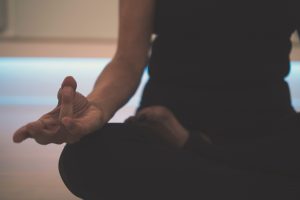What do my dreams mean?

The average person spends six years of their lifetime dreaming. So if you aren’t paying attention to your dreams, you should be asking: “Have I been missing something?”
Famously, psychoanalyst Sigmund Freud concluded that ‘Dreams are the royal road to the unconscious’, a hidden part of the psyche that contains our repressed instinctual drives, memories, fears and desires.
Taking his cue from the restoration of post-hypnotic memories, Freud realised that dream analysis could recover forgotten childhood memories.
For Freud, our associations with dream symbols reveal our unconscious emotional complexes and conditioning. Through psychoanalysis, repressed contents become conscious, thus freeing the individual from the grip of negative life patterns formed in early life. In Freud’s classic book, The Interpretation of Dreams, first published in 1899, he argues that every dream reveals something about our psychological make-up and shows us something about why we behave the way we do in waking life.
Messages from the memory
Carl Jung, initially a disciple of Freud’s views and later a dissenter, took Freud’s conclusions further, showing that dreams reveal a spiritual ‘structure’ behind the overlay of the psychological. Jung coined the expression the Collective or Transpersonal Unconscious to describe this symbolic reality that contains and transcends the personal unconscious.
Many authors, artists, and scientists tap into the Collective Unconscious in their dreams. For example, the French mathematician, Henri Jules Poincaré, unable to solve a profound mathematical problem, described how, one night, he found himself in a dream writing the equation across a chalkboard for his students. In the process, he solved the problem. Upon waking, he recalled the solution.
According to Jung, the unconscious ‘always tries to produce an impossible situation in order to force the individual to bring out his very best.’ This is true both in life and dreams. Jung linked dream imagery to the process of individuation in which a person’s outer life becomes more aligned with their inner nature. Dreams mirror the dreamer’s inner state and reveal what they need to move towards balance. For instance, a person who is artificially pleasant may have dreams full of anger.
Drawing upon the Jungian approach, Transpersonal psychology holds that dreams also reveal our spiritual potential. Our capacity to imagine – expressed through dreams – acts as a bridge between the worlds of matter and spirit. When we explore dream images, we access something beyond our minds, discovering more about our true nature within the multi-dimensional realm of consciousness.
Significant signs
The core of Transpersonal Psychology relates to the Big Questions in our lives: What gives our lives meaning? How do we express the Highest Good or Divine in our lives? How do we live fully? We find these questions answered in our dreams.
From the Transpersonal viewpoint, in dreams our psyches open to the more mysterious and numinous, that is, sacred and divine qualities, also contained in the unconscious. In this way, dreams can facilitate inner transformation and healing.
This has great significance for wellbeing because, as Jung claimed, it is the encounter with the numinous that is the ‘real therapy’. During a numinous experience, whether in waking life or dreams, we receive emotional and physical healing.
The following dream illustrates a physical dream healing. The dreamer was suffering from a severe sinus infection at the time: “I stand surrounded by bright light. A handsome man approaches and says: ‘I hear you haven’t been feeling well.’ As he speaks, he lifts his right forefinger and touches me under each eye. I instantly feel healed. I wake up feeling better.”
Dream encounters can also bring emotional healing, putting the dreamer in touch with a desire to renew their interest in life as in this dream depicting the ‘inner child’: “I find myself sitting on a wooden floor next to a baby girl who can just sit up. She wears a red dress and looks perfect. My heart opens towards her. I put my hands under her arms so she can stand.
“Looking at her, I realise she will require a lifetime of love. I tell her: ‘Of course, you are everything. You are all that matters.’ I awake, feeling she represents the new life I’m to bring into the world.”
Lucid dreaming
From the perspective of many spiritual traditions, waking life represents an illusory world, a ‘veil of Maya’, filled with constant change that distracts us from who we truly are. From this viewpoint, dreams reflect a greater reality that lies behind the physical world of matter.
“Dreams are the seedlings of realities,” to quote the writer James Allen.
We can even consciously learn to ‘wake up in sleep’ by becoming lucid, aware that we dream while we’re actually dreaming. Lucid dreaming has now been scientifically mapped as a brain state through MRI scans.
Research on lucid dreaming has shown the dreamer can communicate with observers using agreed-upon eye movements during rapid eye movement (REM) sleep. In lucid dreams, we can choose many courses of action, much like in the waking world.
However, in lucid dreams, if we align our will with our Highest Will and surrender to the awareness we ‘belong to more than ourselves’, new experiences of being and knowing occur. These involve transformative encounters that empower us to enact creative change in the waking world.
The development of reflective-awareness in dreams has a long history within Wisdom Traditions. For example, Tibetan Buddhism, with its practice of Dream Yoga, has been featured in popular conceptualisations of lucid dreaming.
However, esoteric Judaism, Christianity and Islam also explore the revelatory aspects of dreaming for spiritual purposes. The call to ‘wake up’ to a greater wisdom and deeper love echoes throughout Wisdom Traditions and our dreams. The more we ‘wake up’ to our dreams, the more we wake up to life. And no one should miss that!
See driccpe.org.uk for more information.
Find your balance: common dream myths busted
‘I don’t dream’
This actually means, ‘I don’t remember my dreams’. Everyone dreams several times a night. We can learn to recall them by setting the intention to remember our dreams before sleep and by writing down our dreams immediately after waking.
‘Dreams are purposeless’
Neurologists believe the rapid eye movement (REM) state, in which dreams occur, correlates with brain development, particularly in infancy. Studies suggest dreams are involved in the ongoing creation of memories and help us to process information.
‘A dictionary can tell me dream meanings’
Although symbols can have a universal meaning such as a heart being equated with love, it’s more about discovering what the symbol means to you personally.
In this case, linking the heart to your own experiences of love, and applying that to your dream and current life context. We each develop our own symbol system in our dreams.
‘Dreams are a waste of time’
In our lifetime, we averagely spend the equivalent of 2,000 days ‘dreaming’. Given the correlations between dreams and wellbeing, it’s good for your health to develop a relationship with your dreams through dreamwork, especially by learning to become lucid and to ‘awaken’ in sleep.
Melinda Powell is a psycho-therapist and the co-founder of the Dream Research Institute (DRI), which studies the relationship between dreams and wellbeing. You can find out more about her practices surrounding lucid dreaming through her books: The Hidden Lives of Dreams and Lucid Surrender: The Alchemy of the Soul in Lucid Dreaming.











